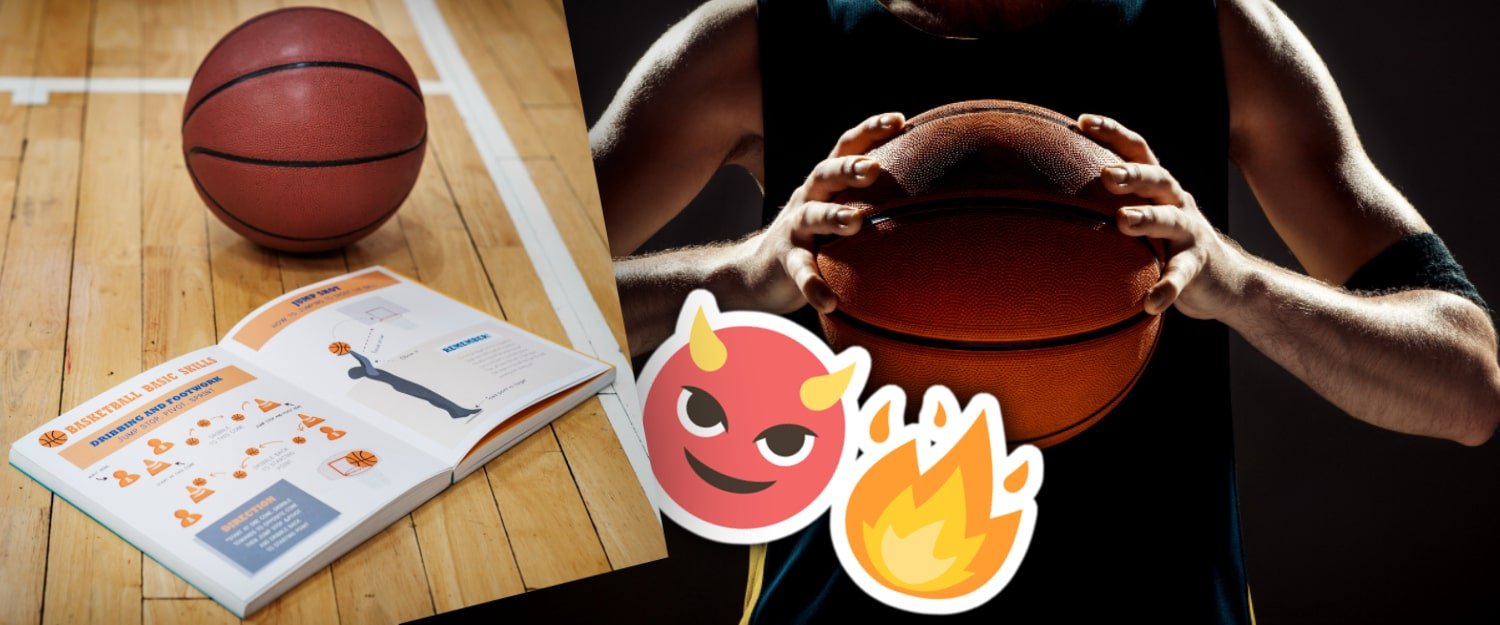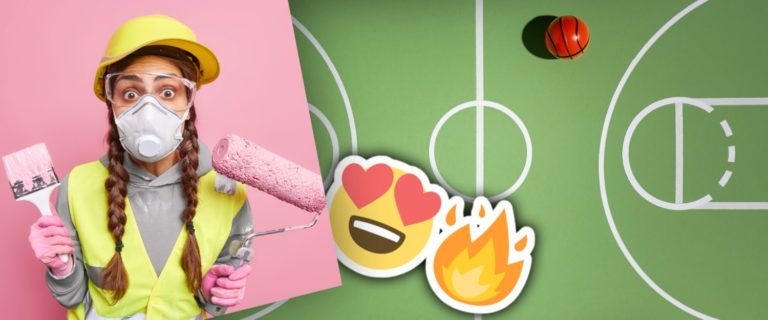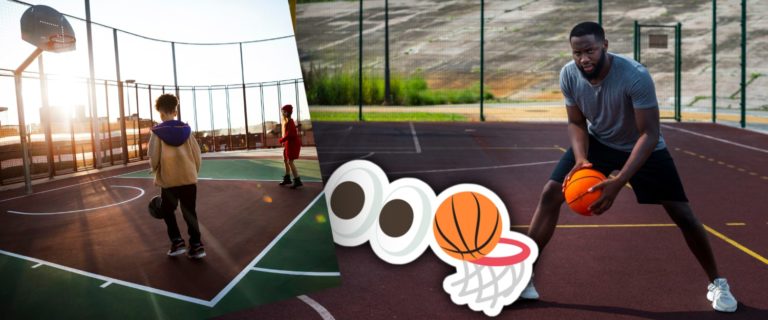How To Play Power Forward In Basketball: The Best Position
In basketball, a power forward is the player that lines up at the front of a team’s formation. The power forward frequently assists in post-up scoring as well as offensive and defensive rebounds. Because it is their responsibility to be able to guard the centers of other teams and also be tall enough to rebound over them, power forwards are typically taller than the other players on the court. This blog post will go over some of the greatest power forwards in basketball history as well as what it takes to be a power forward.
What is The Role of a Power Forward in Basketball?
A power forward in basketball is a player that lines up at the front of a team’s formation. They are usually taller than other players on the court because it is their job to be able to defend against opposing centers while also being tall enough to rebound over them.

Rebounding
Rebounding is one of the most crucial skills for a power forward to succeed at this position. It becomes challenging to rebound over taller opponents because you are frequently paired with them. Another method you may help your team out is by out-rebounding the opposition, grabbing an offensive rebound for a putback, or snatching several defensive rebounds in crucial situations.
Defense and Shot Blocking
It’s critical for a power forward to be able to play solid defense. Being tall or possessing an intimidating presence alone is insufficient. You must consistently keep your opponent in front of you while actively moving your feet. Several power forwards are more naturally adept at shot blocking because of their size advantage over other players on the court. The area around this player at the front of their team’s formation is one that you definitely don’t want the ball to end up.
Blocking shots isn’t only about height; some shorter players like Dennis Rodman were great shot blockers as well! That’s why we highly recommend watching highlight reels of basketball history. Such as Rodman playing with Michael Jordan during his second three-peat with the Chicago Bulls.
Shooting
Contrary to popular belief that Power Forwards must only live inside the paint, current basketball evolution showed us that Power Forwards can also make shots from the outside.
A stretch four (sometimes called a stretch big) is a player at the power forward position that can shoot farther from the basket than a conventional power forward. “Stretch” describes the effect such a player has on the opposition defense, and the power forward position is also known as the “four”; hence “stretch four”.
A stretch four is a player that is of power forward size but has superior shooting skills (especially three-point field goals), spending more of their time away from the basket. While using these skills on offense, the player retains the ability to defend the opposing power forward.
Stretch fours are tactically employed in this way to “stretch” the opponent’s defense. The ability to score a high percentage of catch-and-shoot three-point shots from distance (the distinct feature of a stretch four) causes defensive problems for the opposing team, as it pulls the opposing power forward defender out of the low post area, opening up driving lanes for teammates to exploit (these can be running lanes or passing lanes).
A short-list of the past and present stretch power forwards are as follows:
- Kevin Garnet
- Dirk Nowitzki
- Kevin Love
- Anthony Davis
- Chris Bosh
These are many more good shooting Power Forwards in the NBA but these 5 players above are player who shot the ball outside efficiently and are Hall of Famers.
Strength and Conditioning
Players need to be exceptionally strong and fit in order to succeed in this position. Whether guarding your opponent for a prolonged amount of time or boxing out to get rebounds if the ball isn’t going directly into your area, strength is extremely crucial. All that matters is who is stronger. Someone like Shaquille O’Neal was a power forward because he had what it took on both ends of the court!
But not everyone has access to muscle-building supplements such as Creatine, which is one supplement we recommend looking into. This component improves the energy metabolism of creatine phosphate in our cells, which aids in strength training by increasing blood flow via vasodilation (opening up your veins and arteries). We encourage you to consider your objectives and what you hope to accomplish as a dominant player on the court.
How Do You Become a Good Power Forward in Basketball?
You need to be tall and strong to play basketball as a power forward. Also, you should be able to play both guard and center because you can end up on the outside if your team has smaller players who can outrun you on the floor. Also, since there are no timeouts in basketball, hustle during every minute of play. You must be able to complete the game entirely at 100% speed because resting on the court is not an option!
Power Forward’s Average Height
The average height for a power forward is around six feet ten inches tall. However, some players play the position who stands at about seven or eight feet tall. It is important to be tall enough. But also quick and fast on your feet so you can keep up with smaller players.

Power forwards are usually taller than other players on the court because it is their job to defend against opposing centers while being able to rebound over them.
How Do You Play Power Forward in Basketball?
Power forwards are often of a larger build than other players on the court. This is because power forwards plays closer to the basket where more strength and weight can be an advantage over their opponent who will usually have less size at that position. Power forwards must also possess good shooting skills beyond the close range or around the paint to excel in today’s game.
There are many different qualities and skillsets you need to play power forward, including strength, athleticism, endurance, footwork, and coordination! You must be comfortable with physical contact either when rebounding or setting screens for your point guard. Being patient around the hoop during post-up moves can lead to easy points too!
Best Power Forwards in Basketball History!
Kevin Garnett
Kevin Garnett is one of the best power forwards in NBA history. He was a tremendous rebounder at both ends of the court, and his quickness allowed him to get around slower players on defense. Garnett was versatile and willing to play anywhere on the court, making him a valuable asset during his long career.
Strength plus quickness plus hustle equals winning basketball games every time a guy steps out onto that hardwood court, and KG possessed all the qualities you look for in a player who plays this position.
Dirk Nowitzki
Dirk Nowitzki is another power forward worth mentioning when it comes to listing the best power forwards in basketball history. He is a seven-footer with good range and the ability to put on some serious weight during his career (he has gotten up as high as 245 lbs)!
Dirk Nowitzki’s height, shooting skills, and endurance made him one of NBA MVPs best power players ever! He is a ten-time all-star, one-time NBA Finals MVP, and has scored over 30,000 points in his career!
Tim Duncan
Standing at 6 feet 11 inches (2.11 m) and weighing 250 pounds (113 kg), Duncan was a power forward who could also play center. With a double-double career average in points and rebounds, he was considered one of the most consistent players in the NBA throughout his career.
Regarded as one of the league’s best interior defenders, Duncan also ranked consistently as one of the top scorers, rebounders and shot-blockers in the league. At the end of his final season in 2015–16, he was ranked first in regular season point-rebound double-doubles among active players, while he led the charts in postseason point-rebound double-doubles (158 as of 2013–14).
Apart from his impressive statistics, Duncan has gained a reputation as a clutch player, as evidenced by his three NBA Finals MVP awards, 5-time NBA Champion and his playoff career averages being higher than his regular season statistics.
Charles Barkley
Charles Barkley is another one of the greatest power forwards in NBA history. He was a great rebounder and he had good dribbling skills too! Charles Barkley could play just about any position on the court because of his size and strength, but power forward suited him best.
One thing that made Charles Barkley stand out from other players at his position was his crazy antics both on and off the court – expect to be entertained when watching this guy perform!
Dennis Rodman
As we mentioned earlier in our blog post, Dennis Rodman might not have been the tallest player around but he made up for it by being tough as nails when rebounding and playing defense against taller opponents such as Shaquille O’Neal and Hakeem Olajuwon.
Rodman was a skilled rebounder who knew how to position himself for the best possible chance at grabbing the ball, which is why he averaged close to 13 rebounds per game during his career!

Conclusion
In conclusion, power forwards is versatile players who typically stand around six foot nine inches tall. Power forwards rely on their strength and body mass to overpower opponents in the post, while also having good speed and endurance for the defense at both ends of the court!
We had to go for a top-four, this time because we could not leave out the infamous Dennis Rodman, part-responsible for the Chicago Bulls’ two three-peats! So who’s your favorite power forward? Let us know below.








